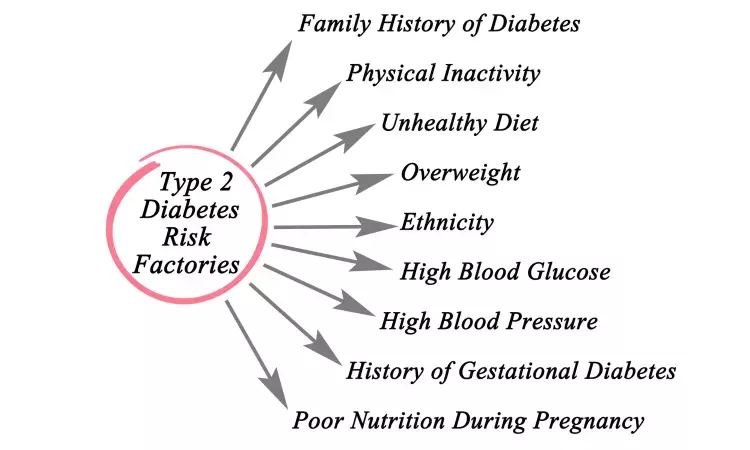- Home
- Medical news & Guidelines
- Anesthesiology
- Cardiology and CTVS
- Critical Care
- Dentistry
- Dermatology
- Diabetes and Endocrinology
- ENT
- Gastroenterology
- Medicine
- Nephrology
- Neurology
- Obstretics-Gynaecology
- Oncology
- Ophthalmology
- Orthopaedics
- Pediatrics-Neonatology
- Psychiatry
- Pulmonology
- Radiology
- Surgery
- Urology
- Laboratory Medicine
- Diet
- Nursing
- Paramedical
- Physiotherapy
- Health news
- Fact Check
- Bone Health Fact Check
- Brain Health Fact Check
- Cancer Related Fact Check
- Child Care Fact Check
- Dental and oral health fact check
- Diabetes and metabolic health fact check
- Diet and Nutrition Fact Check
- Eye and ENT Care Fact Check
- Fitness fact check
- Gut health fact check
- Heart health fact check
- Kidney health fact check
- Medical education fact check
- Men's health fact check
- Respiratory fact check
- Skin and hair care fact check
- Vaccine and Immunization fact check
- Women's health fact check
- AYUSH
- State News
- Andaman and Nicobar Islands
- Andhra Pradesh
- Arunachal Pradesh
- Assam
- Bihar
- Chandigarh
- Chattisgarh
- Dadra and Nagar Haveli
- Daman and Diu
- Delhi
- Goa
- Gujarat
- Haryana
- Himachal Pradesh
- Jammu & Kashmir
- Jharkhand
- Karnataka
- Kerala
- Ladakh
- Lakshadweep
- Madhya Pradesh
- Maharashtra
- Manipur
- Meghalaya
- Mizoram
- Nagaland
- Odisha
- Puducherry
- Punjab
- Rajasthan
- Sikkim
- Tamil Nadu
- Telangana
- Tripura
- Uttar Pradesh
- Uttrakhand
- West Bengal
- Medical Education
- Industry
Preserved Ratio Impaired Spirometry may predict increased risk of mortality in type 2 diabetes

Type 2 diabetes mellitus (T2DM) and its complications are taking a toll on global health. The Global Burden of Disease Study 2013 identified diabetes as the ninth major cause of reduced life expectancy. It was estimated that diabetes caused 4.2 million deaths in adults aged 20–79 years during 2019, which is 11.3% of global mortality.
The prospective associations of preserved ratio impaired spirometry (PRISm) with new-onset macrovascular and microvascular complications and mortality among individuals with type 2 diabetes (T2D) have been found in several studies. The recent study in Chest journal analyzed the same.
Researchers analyzed whether PRISm enhances the prediction ability of an established office-based risk score remains to be elucidated and the study found that individuals with T2D with comorbid PRISm, showed significantly increased risks of adverse macrovascular and microvascular complications and mortality.
Researchers included 20,047 study participants with T2D and complete data on spirometry at recruitment from the UK Biobank cohort. Multivariable Cox proportional hazards models were used to assess the associations of baseline PRISm (FEV1 to FVC ratio, ≥ 0.70; FEV1, < 80% predicted) with subsequent risks of incident stroke (any type), ischemic stroke (IS), myocardial infarction (MI), unstable angina, coronary heart disease (CHD), diabetic retinopathy (DR), diabetic kidney disease (DKD), all-cause mortality, cardiovascular mortality, and respiratory mortality.
The key findings of the study are
• For this cohort analysis, 4,521 patients (22.55% of participants with T2D) showed comorbid PRISm at baseline.
• Over a median follow-up of 11.52 to 11.87 years, patients with T2D with PRISm at baseline showed higher risks than those with normal spirometry findings of various T2D complications developing and mortality; the adjusted hazard ratios for PRISm were 1.413 (95% CI, 1.187-1.681) for stroke (any type), 1.382 (95% CI, 1.129-1.690) for IS, 1.253 (95% CI, 1.045-1.503) for MI, 1.206 (95% CI, 1.086-1.339) for CHD, 1.311 (95% CI, 1.141-1.506) for DR.
• 1.384 (95% CI, 1.190-1.610) for DKD, 1.337 (95% CI, 1.213-1.474) for all-cause mortality, 1.597 (95% CI, 1.296-1.967) for cardiovascular mortality, and 1.559 (95% CI, 1.189-2.044) for respiratory mortality, respectively.
• The addition of PRISm significantly improved the reclassification ability, based on the net reclassification index, of an office-based risk score by 15.53% (95% CI, 10.14%-19.63%) to 33.60% (95% CI, 20.90%-45.79%).
Researchers concluded that “Individuals with T2D with comorbid PRISm, accounting for a considerable proportion of the population with T2D, showed significantly increased risks of adverse macrovascular and microvascular complications and mortality.”
Reference: Li G, Jankowich MD, Wu L, Lu Y, Shao L, Lu X, Fan Y, Pan CW, Wu Y, Ke C. Preserved Ratio Impaired Spirometry and Risks of Macrovascular, Microvascular Complications and Mortality Among Individuals With Type 2 Diabetes. Chest. 2023 Jun 17:S0012-3692(23)00794-8. doi: 10.1016/j.chest.2023.05.031. Epub ahead of print. PMID: 37356807.
MSc. Neuroscience
Niveditha Subramani a MSc. Neuroscience (Faculty of Medicine) graduate from University of Madras, Chennai. Ambitious in Neuro research having worked in motor diseases and neuron apoptosis is interested in more of new upcoming research and their advancement in field of medicine. She has an engrossed skill towards writing and her roles at Medical dialogue include Sr. Content writer. Her news covers new discoveries and updates in field of medicine. She can be reached at editorial@medicaldialogues.in
Dr Kamal Kant Kohli-MBBS, DTCD- a chest specialist with more than 30 years of practice and a flair for writing clinical articles, Dr Kamal Kant Kohli joined Medical Dialogues as a Chief Editor of Medical News. Besides writing articles, as an editor, he proofreads and verifies all the medical content published on Medical Dialogues including those coming from journals, studies,medical conferences,guidelines etc. Email: drkohli@medicaldialogues.in. Contact no. 011-43720751


